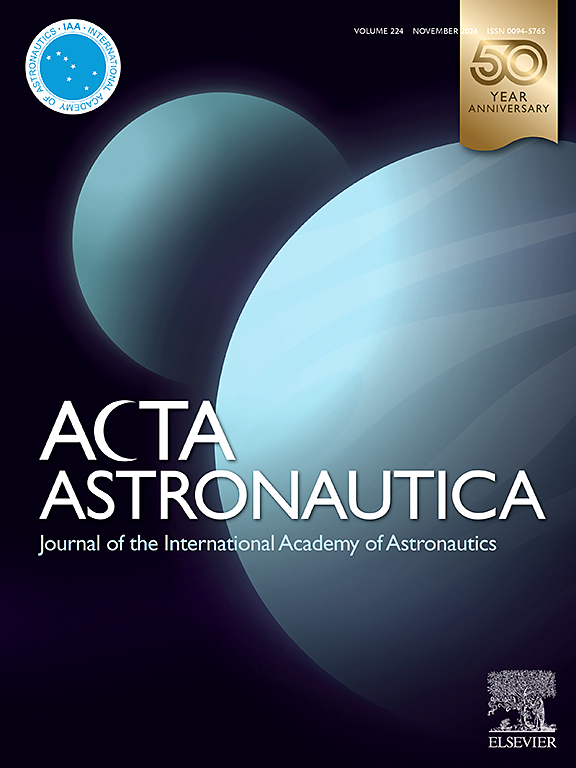Waveform relaxation method for parallel orbital propagation
IF 3.1
2区 物理与天体物理
Q1 ENGINEERING, AEROSPACE
引用次数: 0
Abstract
A new highly parallelizable procedure to integrate perturbed Keplerian motions numerically is presented in this study. It is based on a waveform relaxation method combined with the classic fourth-order Runge–Kutta integrator. Other parallelizable algorithms are already known in the literature, being one of the most widespread the Picard–Chebyshev method. When formulated in Cartesian variables, however, the Picard–Chebyshev method exhibits a limited convergence interval. This limitation requires sequential integration over small segments, reducing the level of parallelization. Alternatively, the equations of motion can be transformed into modified equinoctial elements. The waveform relaxation method proposed here extends both the convergence interval and rate when using Cartesian variables, carrying them to the same level as the modified equinoctial elements. Hence, this method offers an effective parallel algorithm that can be applied directly in Cartesian variables, what simplifies the formulation of the dynamical equations, the integrator structure, and the perturbation force expressions. The convergence and performance of the new waveform relaxation method was validated by performing low-Earth orbit propagations subjected to both conservative and non-conservative perturbations. The evaluation revealed a substantial enhancement with respect to a Picard–Chebyshev method, with a reduction in the Cartesian variables parallel evaluation of the perturbations of approximately 20 times, spanning from 10 to 30 orbit periods and with no significant loss of precision.
求助全文
约1分钟内获得全文
求助全文
来源期刊

Acta Astronautica
工程技术-工程:宇航
CiteScore
7.20
自引率
22.90%
发文量
599
审稿时长
53 days
期刊介绍:
Acta Astronautica is sponsored by the International Academy of Astronautics. Content is based on original contributions in all fields of basic, engineering, life and social space sciences and of space technology related to:
The peaceful scientific exploration of space,
Its exploitation for human welfare and progress,
Conception, design, development and operation of space-borne and Earth-based systems,
In addition to regular issues, the journal publishes selected proceedings of the annual International Astronautical Congress (IAC), transactions of the IAA and special issues on topics of current interest, such as microgravity, space station technology, geostationary orbits, and space economics. Other subject areas include satellite technology, space transportation and communications, space energy, power and propulsion, astrodynamics, extraterrestrial intelligence and Earth observations.
 求助内容:
求助内容: 应助结果提醒方式:
应助结果提醒方式:


